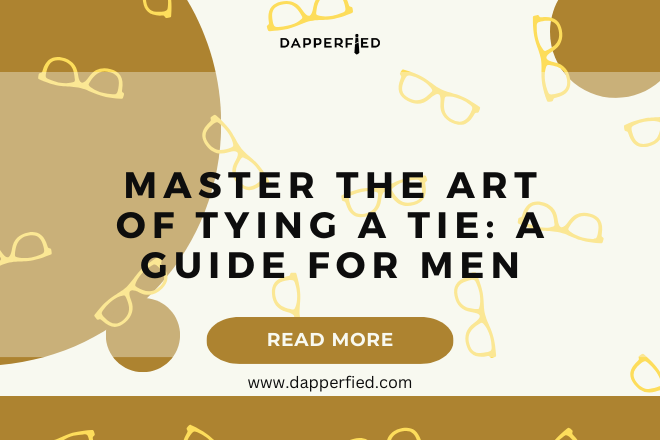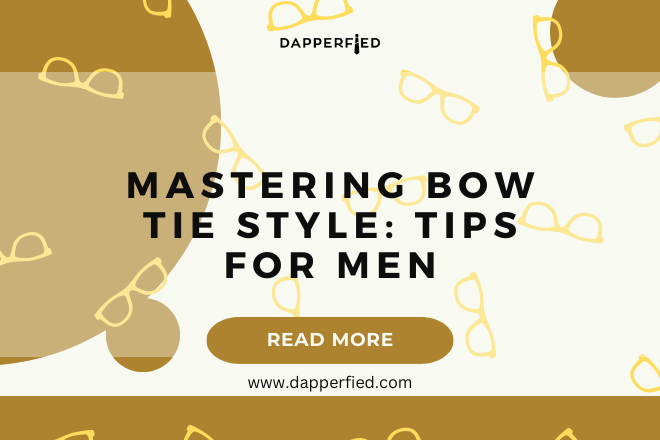
Men's Style
Mastering the Art of Choosing the Right Tie for Men
When it comes to men’s fashion, ties are an essential accessory that can elevate any outfit. There are several different types of ties to choose from, each with its own unique style and purpose. The most common types of ties include the classic necktie, the bow tie, the skinny tie, and the knit tie.
The classic necktie is the most traditional and versatile option, suitable for a wide range of occasions from formal events to business meetings. It is typically made from silk or polyester and comes in various widths and lengths to accommodate different body types. The bow tie, on the other hand, is a more formal and statement-making choice that is often reserved for black-tie events and formal occasions. It can be pre-tied or self-tied, and is available in a variety of fabrics and patterns to suit different tastes.
The skinny tie has gained popularity in recent years for its modern and sleek look. It is characterized by its narrow width, typically around 2 inches, and is best suited for slim or petite individuals. Finally, the knit tie is a more casual and textured option that adds a touch of personality to an outfit. It is made from knitted silk or wool and is perfect for adding a relaxed yet stylish touch to a look. Understanding the different types of ties allows you to choose the right one for any occasion and personal style.
Key Takeaways
- There are several types of ties, including the classic necktie, bow tie, and ascot, each with its own unique style and occasion.
- When matching ties to shirt and suit colors, consider complementary and contrasting color combinations to create a cohesive and stylish look.
- The right tie width for your body type can enhance your overall appearance, with slim ties suiting slender frames and wider ties complementing broader builds.
- Selecting the proper tie length is crucial for achieving a polished and professional look, with the tip of the tie ideally reaching the middle of the belt buckle.
- Knotting techniques such as the classic Windsor knot or the modern four-in-hand knot can add personality and flair to your tie ensemble.
Matching Ties to Shirt and Suit Colors
Matching ties to shirt and suit colors is an important aspect of creating a cohesive and stylish look. When it comes to selecting a tie that complements your shirt and suit, it’s essential to consider color coordination and contrast. A general rule of thumb is to choose a tie that contrasts with the color of your shirt and suit while still complementing the overall color scheme.
For example, if you’re wearing a solid white shirt and a navy suit, you can opt for a tie in a bold color such as red or burgundy to create a striking contrast. On the other hand, if you’re wearing a light blue shirt and a gray suit, you can choose a tie in a complementary color such as navy or charcoal to create a more subtle and harmonious look. Additionally, consider the patterns and textures of your shirt and suit when selecting a tie. If your shirt or suit has a bold pattern or texture, opt for a solid or subtly patterned tie to balance out the overall look.
It’s also important to take into account the season and occasion when choosing tie colors. For formal events and business settings, stick to classic and timeless colors such as navy, burgundy, and forest green. For more casual settings or during the warmer months, you can experiment with brighter colors and playful patterns to add a pop of personality to your outfit. By understanding how to match ties to shirt and suit colors, you can create a polished and put-together look for any occasion.
Choosing the Right Tie Width for Your Body Type
Choosing the right tie width for your body type is crucial for achieving a balanced and proportionate look. The width of a tie can significantly impact the overall appearance of an outfit, so it’s important to consider your body shape when selecting a tie. As a general rule, individuals with broader shoulders and chest should opt for wider ties, while those with slimmer frames should choose narrower ties.
For individuals with broader shoulders and chest, wider ties ranging from 3.25 to 3.75 inches are ideal as they help create a sense of symmetry and proportion. On the other hand, individuals with slimmer frames should opt for ties with widths ranging from 2.5 to 3 inches to avoid overwhelming their proportions. It’s also important to consider the lapel width of your suit jacket when choosing a tie width. The width of your tie should complement the width of your lapels to create a cohesive and harmonious look.
Additionally, consider the overall aesthetic you want to achieve when selecting a tie width. Wider ties exude a more traditional and classic vibe, while narrower ties offer a modern and sleek appearance. By choosing the right tie width for your body type, you can enhance your overall look and feel confident in your outfit.
Selecting the Proper Tie Length
| Tie Length | Proper Fit |
|---|---|
| Too Short | Tie ends above the belt |
| Proper Length | Tie ends at or just above the belt |
| Too Long | Tie ends below the belt |
Selecting the proper tie length is essential for achieving a polished and professional appearance. A tie that is too long or too short can detract from the overall look of an outfit, so it’s important to ensure that your tie length is just right. As a general rule, the tip of your tie should fall right at or just above your belt buckle when properly tied.
For taller individuals or those with longer torsos, it may be necessary to opt for extra-long ties to accommodate their height. Conversely, shorter individuals or those with shorter torsos should opt for shorter ties to avoid excess fabric hanging below their belt line. It’s also important to consider the knotting technique you prefer when selecting tie length. Different knotting techniques can affect the overall length of your tie, so be sure to take this into account when choosing the right tie length for your body type.
When in doubt, it’s always better to opt for a slightly longer tie that can be adjusted with the knotting technique rather than a tie that is too short. By selecting the proper tie length, you can ensure that your outfit looks well put together and polished.
Knotting Techniques for Ties
Knotting techniques for ties are an essential skill that every man should master to achieve a polished and sophisticated look. There are several different knotting techniques to choose from, each offering its own unique style and aesthetic. The most common knotting techniques include the four-in-hand knot, the half-Windsor knot, and the Windsor knot.
The four-in-hand knot is the most popular and versatile knotting technique, suitable for most occasions and collar types. It is characterized by its asymmetrical and slightly narrow shape, making it perfect for achieving a modern and casual look. The half-Windsor knot is a slightly wider and more symmetrical knot that is ideal for business settings and formal events. It offers a balanced and polished appearance that complements most collar types.
The Windsor knot is the widest and most formal knotting technique, best suited for spread collar shirts and formal occasions. It exudes a sense of elegance and sophistication, making it perfect for black-tie events and formal gatherings. When selecting a knotting technique, consider the collar type of your shirt as well as the formality of the occasion. By mastering different knotting techniques for ties, you can elevate your overall look and exude confidence in any setting.

Incorporating Patterns and Textures into Your Tie Selection

Incorporating patterns and textures into your tie selection is an excellent way to add visual interest and personality to your outfit. Ties come in a wide range of patterns and textures, from classic stripes and polka dots to more modern options such as floral prints and geometric designs. When selecting ties with patterns, it’s important to consider how they will complement your shirt and suit while adding depth and dimension to your look.
For formal settings, classic patterns such as stripes, dots, and paisley are timeless choices that exude sophistication and elegance. These patterns can be paired with solid-colored shirts and suits to create a polished and refined appearance. For more casual settings or during the warmer months, consider experimenting with bolder patterns such as florals or abstract designs to add a playful touch to your outfit.
In addition to patterns, textures also play a crucial role in tie selection. Knit ties offer a more casual and relaxed aesthetic, perfect for adding depth and visual interest to an outfit. Silk ties exude luxury and refinement, making them ideal for formal events and business settings. By incorporating patterns and textures into your tie selection, you can showcase your personal style while creating a well-coordinated and visually appealing look.
Accessorizing with Tie Clips and Pins
Accessorizing with tie clips and pins is an excellent way to add a touch of sophistication and detail to your outfit. Tie clips are not only stylish but also practical accessories that help keep your tie in place while adding visual interest to your look. When selecting a tie clip, consider the color and material of your tie as well as the formality of the occasion.
For formal events and business settings, opt for classic metal tie clips in silver or gold tones to complement your outfit. For more casual settings or during the warmer months, consider experimenting with playful designs or colored enamel tie clips to add a pop of personality to your look. When wearing a tie clip, position it between the third and fourth buttons of your shirt for optimal placement.
Tie pins are another stylish accessory that can elevate your outfit. They are typically worn on the narrow end of the tie and add a subtle yet impactful detail to your look. When selecting a tie pin, consider coordinating it with other accessories such as cufflinks or lapel pins for a cohesive appearance.
By accessorizing with tie clips and pins, you can showcase attention to detail while adding an extra layer of sophistication to your outfit. These accessories not only serve a practical purpose but also allow you to express your personal style in a subtle yet impactful way.
Tie clips and pins come in a variety of designs, from classic and understated to bold and eye-catching, allowing you to choose the perfect piece to complement your individual taste. Whether you opt for a sleek silver tie clip for a professional look or a quirky novelty pin to add a touch of personality, these accessories can elevate any outfit and make a lasting impression. Additionally, they can help keep your tie in place and prevent it from swinging around, ensuring that you look polished and put-together throughout the day. Overall, tie clips and pins are a small but significant way to enhance your style and make a statement with your attire.
If you’re looking for more fashion advice for men, be sure to check out Dapperfied’s article on Men’s Suits Buying Guide. This comprehensive guide will help you navigate the world of men’s suits and find the perfect fit for any occasion.

FAQs
What are the different types of ties for men?
There are several types of ties for men, including the classic necktie, the bow tie, the knit tie, and the skinny tie.
How do I choose the right tie for my outfit?
When choosing a tie for your outfit, consider the color, pattern, and fabric of the tie, and how it complements your shirt and suit. It’s important to also consider the formality of the occasion.
What are some popular tie colors and patterns?
Popular tie colors include navy, burgundy, and gray, while popular patterns include stripes, polka dots, and paisley.
What is the proper length and width for a tie?
The proper length for a tie is when the tip of the tie reaches the middle of the belt buckle, and the proper width is typically around 3 to 3.75 inches.
How do I tie a tie properly?
There are several ways to tie a tie, including the four-in-hand knot, the half-Windsor knot, and the Windsor knot. It’s important to choose a knot that complements the width of your tie and the collar of your shirt.















